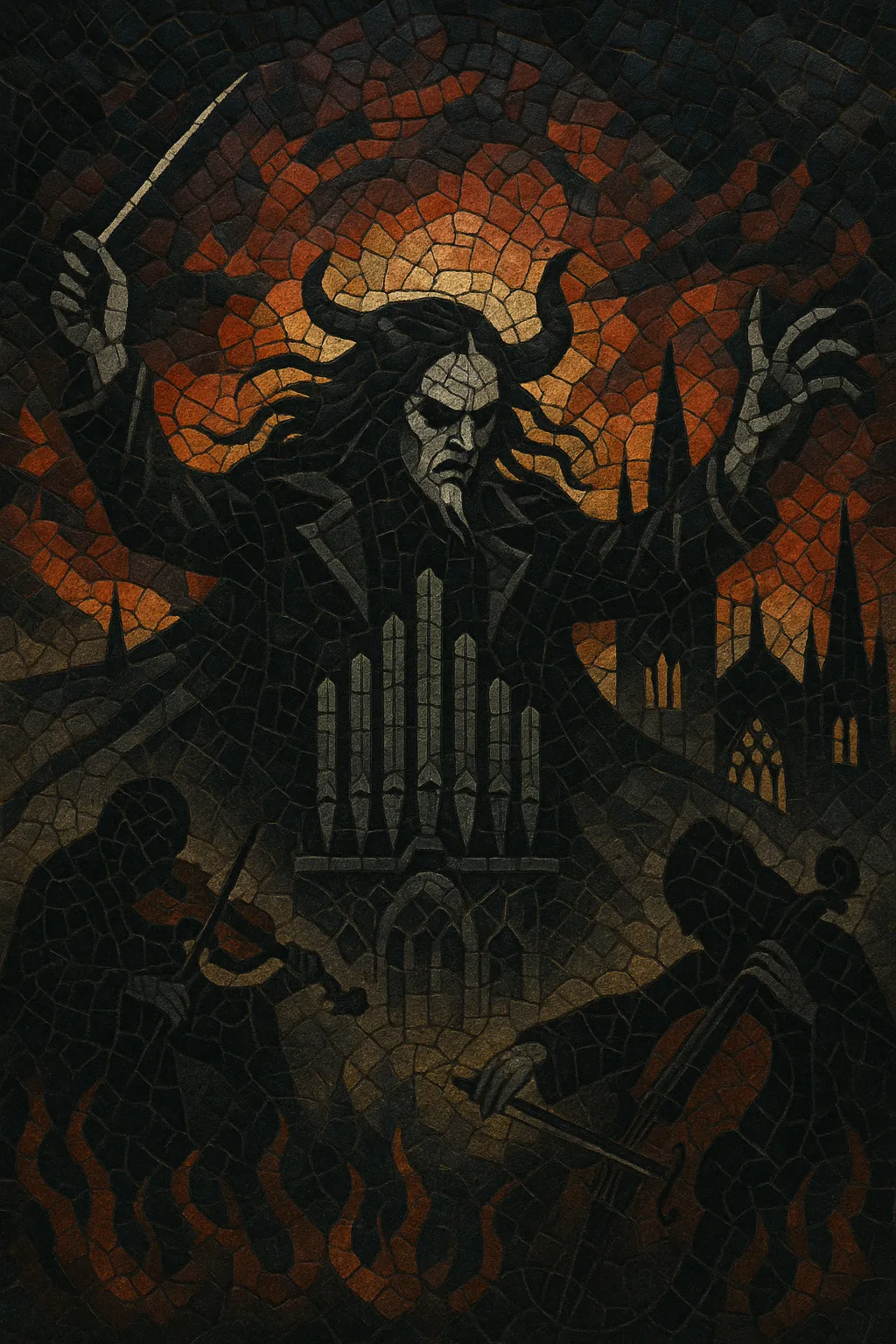Symphonic black metal fuses the speed, tremolo-picked riffing, and shrieked vocals of black metal with orchestral writing, choirs, and cinematic arrangements. It expands the genre’s raw ferocity into a grand, theatrical sound that can feel both infernal and majestic.
Keyboards or full orchestras handle strings, brass, and choral parts that support or counterpoint the guitars, while blast beats and double‑kick patterns drive the intensity. Harmonically, it leans on minor modes, chromatic motion, and diminished sonorities, often evoking Romantic and late‑Romantic classical drama.
Lyrical themes tend toward the occult, mythology, Gothic romance, and horror, and productions range from deliberately grim to highly polished, integrating extreme metal power with film‑score scale.
Norway is widely regarded as the cradle of symphonic black metal. Pioneers such as Emperor established the template with In the Nightside Eclipse (1994), weaving keyboards and quasi‑orchestral textures into second‑wave black metal’s tremolo riffs and blast beats. Soon after, Dimmu Borgir emphasized grand, melodic arrangements, while the UK’s Cradle of Filth brought Gothic lyricism and baroque keyboards into a related, theatrically inclined branch.
By the late 1990s the style matured: Dimmu Borgir’s Enthrone Darkness Triumphant (1997) and Cradle of Filth’s Dusk and Her Embrace (1996) helped popularize symphonic elements across extreme metal. Norway’s Limbonic Art and France’s Anorexia Nervosa pushed speed and orchestration, while the UK’s Bal‑Sagoth mixed pulp‑fantasy narrative with dense, neoclassical keyboards. The language of sweeping string pads, choirs, tubular bells, and timpani over rapid black‑metal rhythm became standard.
In the 2000s productions grew more polished and cinematic. Some acts recorded with real choirs and orchestras, adopting film‑score techniques (layered strings, contrapuntal brass, percussion swells) while maintaining extreme metal aggression. The style’s visibility increased at festivals and on major tours, influencing adjacent blackened and symphonic scenes worldwide.
The 2010s saw diverse approaches: narrative/horror‑driven acts (e.g., Carach Angren), hybridizations with blackened death metal, and regional scenes across Europe, North America, and beyond. Modern records often blend high‑fidelity orchestration with gritty guitars, balancing atmosphere and clarity. While purists sometimes debate its glossy tendencies, symphonic black metal remains a key pathway for orchestral ideas within extreme metal.


